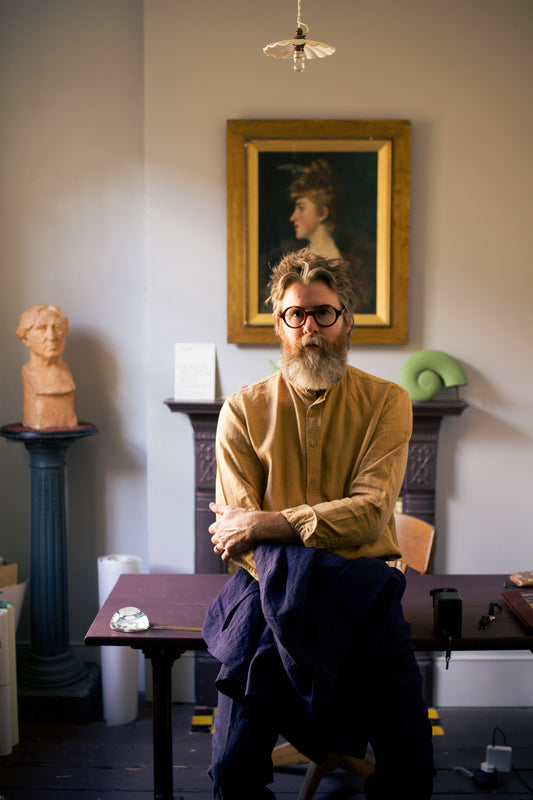You’ve made a name for creating art that straddles the line between abstraction and figuration. In laymen’s terms, what does that mean and how would you describe your approach to your art?
It means, while the work might initially appear abstract, there are clear figurative elements that run through it. Figurative art describes art that is derived from and represents real world objects. Blurring the boundaries between abstraction and figuration is not something I deliberately set out to do, it is just a natural outcome of the way I approach my work.
Part of my training was pretty classical – including portraiture and life drawing – so it inevitably influences my works whether deliberately expressed or not. I guess it’ll shift back and forth over time, more clearly figurative or abstract, depending on where my obsessions lie at the time.

You work across various media, from sculpture, to charcoal and soot drawing. What role does your chosen medium play in the art you create?
Each material has certain advantages and limitations, most of which you won’t discover until you’ve been working with them for a while. There’s an immediacy to working with charcoal – the lines happen as you mean them, hopefully, as soon as you make them.
Candle soot coaxes the marks into being and place, but often does unexpected things. It’s less direct than charcoal, more frustrating but also much more surprising. The marks allow for very different forms of expression and create different sensations.
Over time, you develop a vocabulary in each. The same feels true for working in any material, be it clay, plaster, fabric, or metal. I’ve tended to settle on materials I can put to use quickly. Things that don’t put too many practical limitations on what I can express with them.

How would you describe your personal style? Do you find your choice of casual clothing is influenced by the utilitarian nature of the clothes you wear while working?
Pretty simple and as hard wearing as I can afford. I’d like more of a style but in spite of my best intentions, everything ends up in the studio covered in plaster or riddled with welding holes.
What factors influence you most when buying clothes?
The realisation I haven’t got anything smart to wear that I haven’t ruined in the studio.
QUICK FIRE FIVE
- Favourite restaurant: Camberwell Arms
- Favourite holiday destination: Florence
- Favourite musician: Van Morrison
- Prize possession: A little bronze sculpture of a sparrow by Bill Flowers
- Biggest indulgence: Buying artwork





